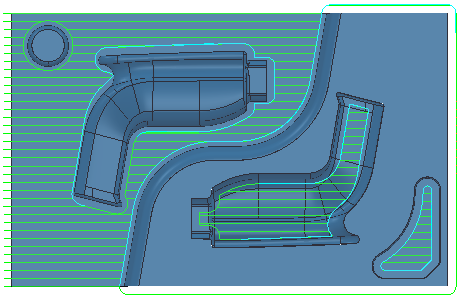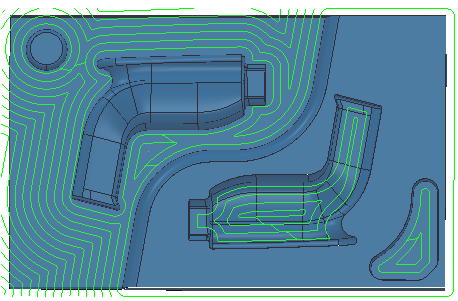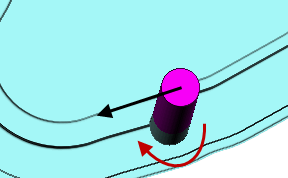Use the Advanced Pocket Mill dialog and its associated pages to specify settings for an advanced pocket mill strategy.
Style — Select a style to use for removing material:
Raster — This comprises straight-line moves parallel to either the X or Y axis.

Offset — This clears an area with contours generated by repeatedly offsetting the initial slice until no further offset is possible.

This produces a toolpath that:
- maintains constant tool load and chip production.
- maintains cut direction.
- avoids machining small or thin-walled upstands.
- minimizes full-width cuts.
Vortex — This produces an offset toolpath which never exceeds the maximum tool engagement angle for optimum machining. As the tool approaches the maximum engagement angle, the toolpath changes to a trochoidal path to avoid tool overload.

Tolerance — Enter a value to determine how accurately the toolpath follows the contours defined by the model.
Cut direction —Select a milling style:
- Climb — Select to create toolpaths using only climb milling, where possible. The tool is on the left of the machined edge when viewed in the direction of tool travel.

- Conventional — Select to create toolpaths using only conventional or upcut milling, where possible. The tool is on the right of the machined edge when viewed in the direction of tool travel.

- Any — Select to create toolpaths using both conventional and climb milling, as appropriate. This minimizes the tool lifts and tool travel.
Pocketing Side — Specify how profiles are used for identifying regions for machining.
- Inside Profile — Outer profiles are considered pocket walls, and nested curves are islands. This is the default setting.
- Outside Profile — All profiles are considered islands and nested curves are ignored.